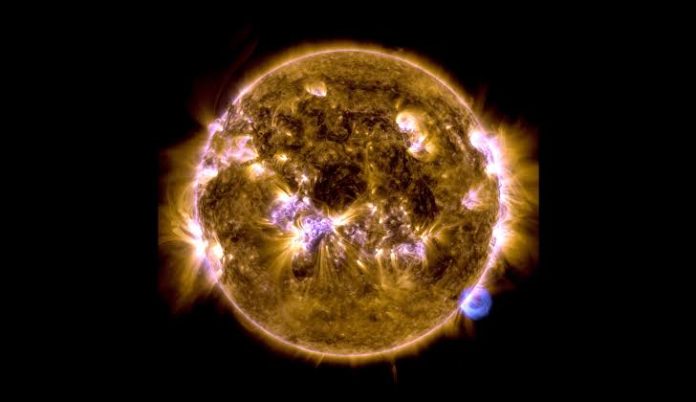Scientists have released the most detailed picture of the Sun ever taken, thanks to the Solar Orbiter, a spacecraft built through a partnership between the European Space Agency (ESA) and NASA. The mission began in February 2020, with the goal of traveling closer to the Sun than any spacecraft had gone before, in order to study it in ways never possible until now.
In March, the Solar Orbiter managed to capture 200 high-quality pictures from a distance of about 48 million miles away. These individual images were carefully joined together to create the largest ultraviolet view of the Sun ever made. The picture shows incredible details of our star: bright loops of extremely hot plasma shaped by the Sun’s powerful magnetic field, as well as long, dark stretches of cooler material that can span thousands of miles across the solar surface.
For scientists, these images are more than just beautiful—they could help unlock mysteries about the Sun. One of the biggest questions is how the constant stream of particles known as the solar wind is formed. Another puzzle is why the Sun’s outer atmosphere, called the corona, is millions of degrees hotter than its surface.
The Solar Orbiter is also unique because it is the first mission designed to closely study the Sun’s polar regions, which play a key role in controlling solar activity. By learning more about these regions, scientists hope to better predict space weather—storms of charged particles that can affect satellites, power grids, and communication systems here on Earth.
This groundbreaking mission is giving humanity a chance to see the Sun in greater detail than ever before, bringing us closer to understanding the forces that power the heart of our solar system.


